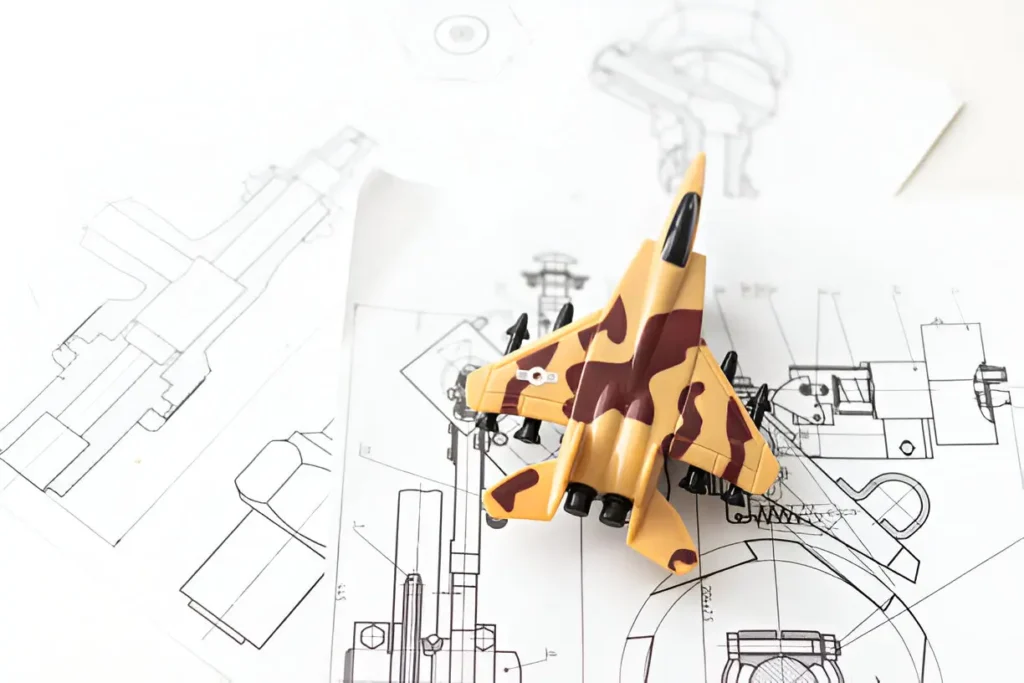Resins are vital in aerospace and defense, providing durability under extreme conditions like high temperatures, vibrations, and chemical exposure. Choosing the right resin is critical to ensuring safety and reliability. This guide outlines key factors engineers must consider for making the best resin selection to support mission success.
Understanding Performance Requirements
Before diving into specific resin options, engineers must establish clear performance criteria based on the intended application. Aerospace and defense components face unique challenges that civilian applications rarely encounter.
Temperature resistance stands as perhaps the most critical factor. Aircraft engines operate in environments where temperatures can exceed 300°C, while spacecraft components may experience temperature swings from -200°C to 200°C. The selected resin must maintain structural integrity across these extreme ranges without degrading or losing mechanical properties.
Mechanical strength requirements vary significantly depending on the component’s role. Structural elements like wing components or fuselage sections require resins with high tensile and compressive strength. Meanwhile, interior components may prioritize lightweight properties while maintaining adequate durability.
Chemical resistance becomes particularly important for components exposed to fuel, hydraulic fluids, cleaning solvents, and atmospheric contaminants. Military applications may also require resistance to specialized chemicals or decontamination agents.
Key Resin Types for Aerospace and Defense
Epoxy Resins
Epoxy resins dominate aerospace applications due to their excellent mechanical properties and chemical resistance. These thermoset polymers offer superior adhesion to various substrates and can be formulated to meet specific performance requirements.
High-temperature epoxies can withstand temperatures up to 250°C, making them suitable for engine components and heat shields. They exhibit low shrinkage during curing, which helps maintain dimensional stability in precision components. Additionally, epoxy resins provide excellent fatigue resistance, crucial for components subjected to repeated stress cycles.
The versatility of epoxy systems allows for customization through various curing agents and modifiers. Aerospace-grade epoxies often incorporate toughening agents to improve impact resistance and reduce crack propagation.
Polyimide Resins
When applications demand extreme temperature performance, polyimide resins excel where other materials fail. These high-performance polymers can operate continuously at temperatures exceeding 300°C while maintaining their mechanical and electrical properties.
Polyimides offer exceptional thermal stability, making them ideal for jet engine components, exhaust systems, and spacecraft applications. They also provide excellent electrical insulation properties, making them valuable for aerospace electronics and wiring systems.
The main challenges with polyimide resins include higher processing temperatures and more complex curing procedures. However, their superior performance in extreme environments often justifies these additional processing requirements.
Phenolic Resins
Phenolic resins bring unique advantages to aerospace applications, particularly in areas requiring flame resistance and thermal insulation. These resins naturally char when exposed to extreme heat, creating an insulating barrier that protects underlying structures.
Aircraft interior components often utilize phenolic resins due to their excellent fire resistance properties. They meet stringent flammability standards while providing adequate mechanical strength for non-structural applications.
The low smoke generation of phenolic resins makes them particularly valuable in enclosed spaces where smoke toxicity could endanger personnel during emergencies.
Bismaleimide (BMI) Resins
BMI resins bridge the performance gap between epoxies and polyimides, offering high-temperature capability with easier processing characteristics. These resins can operate at temperatures up to 230°C while providing excellent mechanical properties.
Military aircraft applications frequently specify BMI resins for structural components that experience elevated temperatures during operation. They offer good toughness and damage tolerance, essential properties for combat aircraft that may experience impact damage.
Environmental and Regulatory Considerations
Aerospace and defense applications must comply with numerous environmental and regulatory standards. The selected resin must meet fire, smoke, and toxicity (FST) requirements, particularly for aircraft interior applications.
Outgassing becomes critical for space applications, where volatile compounds released from materials can contaminate sensitive equipment or create hazardous atmospheres in enclosed spacecraft. NASA and ESA maintain strict outgassing standards that limit the acceptable levels of total mass loss and collected volatile condensable materials.
Chemical compatibility with other system components requires careful evaluation. The resin must not react adversely with metals, seals, or other materials in the assembly. Galvanic corrosion can occur when dissimilar materials are in contact, particularly in marine or high-humidity environments.
Processing and Manufacturing Factors
The chosen resin must align with available manufacturing processes and equipment, including those used for injection molding products. Autoclave curing provides superior quality but requires significant capital investment and limits part size. Out-of-autoclave resins offer more flexibility but may require different quality control procedures.
Curing temperature and pressure requirements affect both manufacturing costs and facility requirements. High-temperature curing systems may require specialized tooling materials that can withstand the processing conditions without dimensional changes.
Storage and handling requirements vary significantly between resin systems. Some advanced resins require frozen storage, which adds complexity to inventory management and supply chain logistics.
Quality Control and Testing
Aerospace and defense applications demand rigorous quality control procedures to ensure consistent material properties. Non-destructive testing methods must verify proper curing and detect any defects that could compromise performance.
Mechanical testing protocols should simulate actual service conditions, including temperature cycling, vibration, and chemical exposure. Long-term environmental exposure testing helps predict service life and maintenance requirements.
Batch-to-batch consistency becomes crucial for production applications. The selected resin system must demonstrate reproducible properties across multiple production runs and different manufacturing locations.
Conclusion
Now that you have a better understanding of the importance of material selection in product design and development, it is essential to carefully consider all factors such as mechanical properties, environmental conditions, and production requirements.
Also Read-Floral Festivals in France: Where to Travel This Spring and Summer
